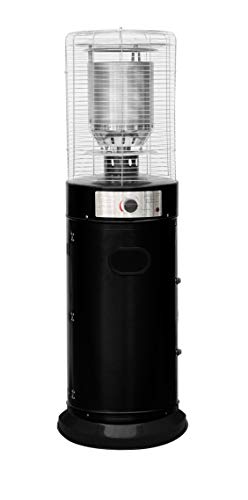Buying Gas Radiant Heaters: A Comprehensive Guide
Gas radiant heaters have actually acquired popularity in recent years for their efficiency and capability to provide instantaneous heat. As more property owners and services look for methods to keep their spaces comfortable, comprehending the features, advantages, and factors to consider when acquiring these heating systems can be very informative. This post explores the complexities of gas radiant heaters, helping possible purchasers in making informed decisions.
What are Gas Radiant Heaters?
Gas radiant heaters are devices that make use of propane or gas to emit heat straight into a space. Rather than heating the air, they warm objects and individuals in their area, supplying convenience quicker and effectively. Patio Heater Uk are popular for both indoor and outdoor settings due to their flexibility and efficiency.
Secret Features of Gas Radiant Heaters
- Direct Heating: Unlike standard heaters that warm the air, gas radiant heaters supply direct warmth, making them an efficient option for quickly heating up areas.
- Portability: Many designs are available as portable systems, allowing them to be quickly moved from one location to another.
- Fuel Variety: Gas radiant heaters can be powered by natural gas or propane, giving users versatility based upon availability and choice.
- Adjustable Settings: Most gas radiant heaters featured adjustable heat settings, allowing users to personalize the level of warmth based on their requirements.
Advantages of Gas Radiant Heaters
- Energy Efficiency: These heaters convert gas into heat efficiently, leading to lower utility bills compared to electrical heaters.
- Quick Heating: Radiant heat is felt nearly instantly, making these heaters suitable for unexpected temperature drops.
- Low Maintenance: Gas radiant heaters generally require less upkeep than electrical models, making them a problem-free alternative.
- Eco-friendly: When powered by clean gas, these heaters can be a more ecologically sustainable option compared to other heating methods.
Kinds Of Gas Radiant Heaters
When it pertains to picking a gas radiant heater, it's necessary to understand the different types available. Below are the most common options:
- Indoor Gas Radiant Heaters: Designed for indoor spaces, these heaters are usually vented or unvented and often included built-in safety functions.
- Outdoor Gas Radiant Heaters: Commonly utilized in outdoor patios or outdoor dining areas, these heaters are created to endure the aspects.
- Wall-Mounted Gas Radiant Heaters: A space-saving choice, these systems are perfect for smaller sized areas and can be outfitted with different heat outputs depending upon the area's needs.
- Freestanding Gas Radiant Heaters: These portable designs can be used in different areas, best for those who require versatility.
Buying Guide: How to Choose the Right Gas Radiant Heater
When acquiring a gas radiant heater, a number of aspects should be thought about to ensure you choose the best design for your space:
1. Heating Capacity
- Determined in BTUs (British Thermal Units), the heater's capacity identifies just how much location it can successfully warm. Buyers should evaluate their particular requirements based upon room size.
| Room Size (sq ft) | Recommended BTUs (for Gas Radiant Heaters) |
|---|---|
| 100 - 200 | 5,000 - 10,000 BTUs |
| 200 - 400 | 10,000 - 20,000 BTUs |
| 400 - 600 | 20,000 - 30,000 BTUs |
| 600 - 800 | 30,000+ BTUs |
2. Type of Gas
- Consider whether you will be utilizing propane or natural gas, as various heaters cater to different fuel types.
3. Security Features
- Try to find designs equipped with safety functions such as automated shut-off valves, tip-over protection, and oxygen depletion sensing units.
4. Installation Requirements
- Some heaters might need expert installation, specifically vented models. Make certain to think about the costs and requirements connected with setup.
5. Portability
- If flexibility is vital, consider portable designs that can be easily moved from one place to another.
Installation and Maintenance
Gas radiant heaters are typically straightforward to install, specifically portable designs. Nevertheless, vented options may necessitate professional installation to guarantee they fulfill regional safety codes.
Upkeep generally includes:
- Regular cleaning to avoid dust accumulation.
- Inspecting gas connections and fittings for leakages.
- Making sure security functions are practical.
Idea: Regular checks around the system can assist extend its life expectancy and keep security.
Often Asked Questions (FAQs)
Q1: Are gas radiant heaters safe for indoor use?A1: Yes
, as long as they are effectively vented and geared up with needed security features, they can be safely used indoors.
Q2: Can gas radiant heaters be utilized in enclosed spaces?A2: Unvented gas heaters can present threats in enclosed areas due to possible suffocation or carbon monoxide gas accumulation. Always guarantee enough ventilation. Q3: How do I understand what size heater I need?A3: The appropriate size depends on the area you intend to heat. Refer to the BTU chart
above to identify your requirements. Q4: What is the distinction in between propane and natural gas heaters?A4: The main distinction depends on their energy source
; propane is provided via tanks, while natural gas is usually piped into homes. Q5: How can I make the most of efficiency?A5: Ensure the heater is properly sized for your space, keep it regularly, and consider using it in combination
with other heating methods for maximum comfort. Gas radiant heaters can be a great addition to any home or business, using energy-efficient and quick heating solutions. By comprehending the various types, functions, and considerations
when buying, buyers can make informed decisions that meet their heating requires. With the right option, these heaters provide convenience, reliability, and an inviting environment throughout chillier seasons.

